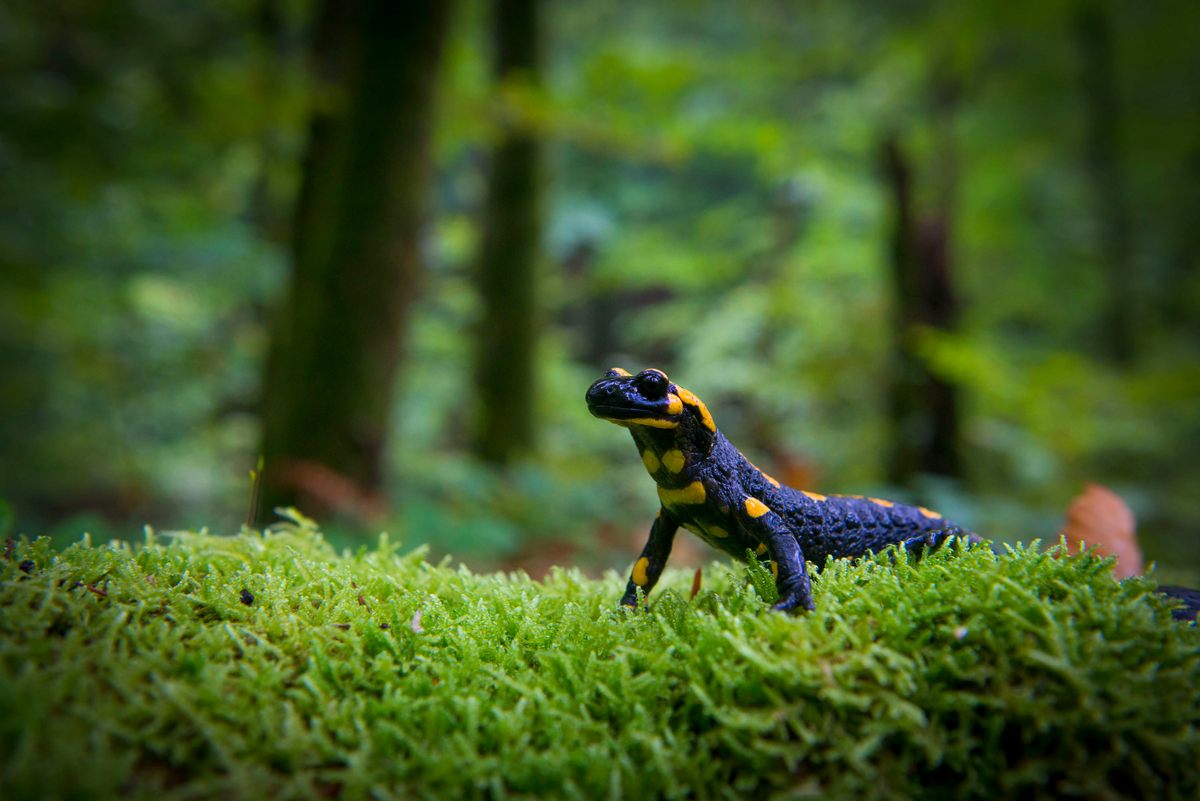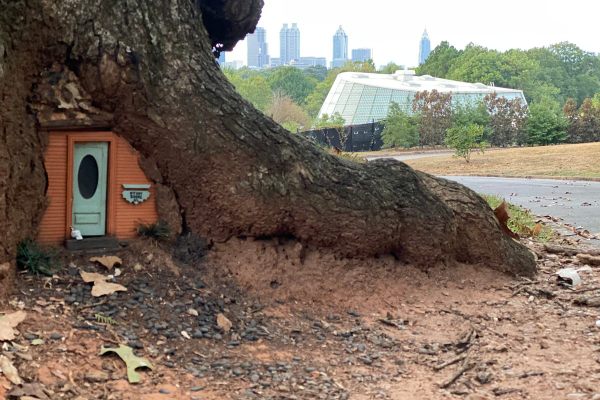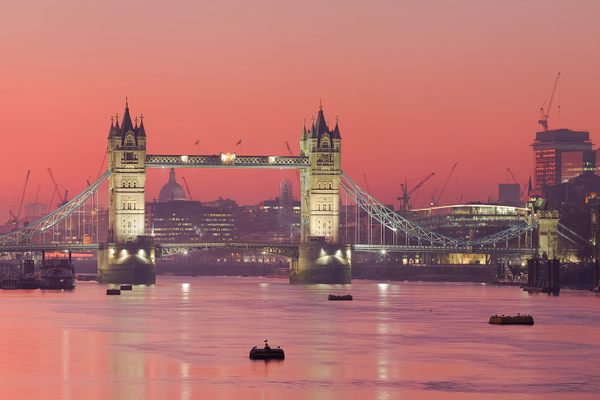How Ukraine’s Environmentalists Are Helping the War Effort
Scientists and citizens unite in a ‘vast network of resistance.’
This story was originally published in Undark and appears here as part of the Climate Desk collaboration.
Surrounded by the Carpathian highlands and a sprawling nature reserve of old growth beech and spruce, Rakhiv serves as a gateway to some of the last remaining primeval forests in Europe. But many of the people who have arrived by train since the war’s outbreak “didn’t even know we existed on the map,” said Victoria Gubko, an employee at the Carpathian Biosphere Reserve. Many of the roughly 1,000 internally displaced people currently living in Rakhiv never intended to stay long, she said. Instead, arriving from the war-ravaged east and south, as well as from Kyiv and its satellite cities, they initially planned to cross the nearby border with Romania.
But once here, greeted by homemade sandwiches at a local school that has become a makeshift community center for the displaced, arrivals have found a sparsely inhabited region, free from bombing. The local government, volunteers, and environmentalists strive to support the new arrivals, housing them in field-research dormitories, visitor centers, museums, and park employees’ homes. “Suddenly you come to a place where you can simply sleep without waking up at night, without running to the basement or the bomb shelter,” said Gubko. “Just sleeping, living, going outside—it’s already a big gift.”
Since the first days of the war, Gubko and her team at the biosphere reserve have coordinated with the Frankfurt Zoological Society and other international partners, arranging shipments of children’s clothes, baby food, medicines, beds, mattresses, and generators. Now, volunteers and park and museum employees are leading nature-based activities for the new arrivals, coordinating trips to the local museum of mountain ecology, as well as hikes through brown bear, wolf, otter, and lynx habitat.
The Carpathian Biosphere Reserve isn’t alone in housing displaced people. Several thousand new arrivals are currently sheltering in national parks scattered across western Ukraine, said Oleksandr Krasnolutskyy, a deputy minister of environmental protection and natural resources. In an April 14 interview with Undark, Krasnolutskyy said that federal park funding is being used to provide them with essential food and clean water, alongside a program of psychological support offered by doctors and mental health professionals. “The national parks,” he said, “will accommodate people as long as they need.”

Ukraine is home to a large and well-connected community of environmentalists who, prior to the Russian invasion, worked to conserve wilderness and address vexing environmental challenges, including oversight of Chernobyl’s radioactive exclusion zone. Amid Ukraine’s whole-of-society wartime reorganization, environmentalists like Gubko have pivoted, using their skills and professional networks to protect people and nature during the war.
They are not just hosting displaced people, but also monitoring air quality, documenting possible environmental war crimes, and supporting the country’s animals during the crisis. “The volunteer movement is immense,” said Gubko. Since March, many of the volunteers have spoken with Undark, describing a vast network of environmental resistance.
Five hundred miles east of Rakhiv, ecologist Olexiy Angurets oversees the Dnipro State Environmental Monitoring Center. The facility tracks air- and waterborne contaminants around Dnipro, a large industrial city in Ukraine. The resulting data have long been relevant for public health. Now, said Angurets, the data are also a matter of national security. Ukraine’s government lists about 23,000 facilities that could wreak havoc on humans and wildlife if they were intentionally damaged or even just improperly maintained. These include chemical plants, hazardous waste storage facilities, and high-profile sites like Chernobyl and the Zaporizhzhia nuclear power plant.
The Ukrainian military assumed responsibility for the Dnipro station on March 21, the day of Angurets’ interview with Undark. Since then, the military has entered negotiations to buy new chemical sensors that detect airborne chlorine and ammonia. “Generally, we continue our work, but with some more focus on more specific substances, more focus on radiation, and also in cooperation with military units and emergency services,” said Angurets.

On the day of the interview, there had been shelling at a chemical factory about 200 miles to the north, said Angurets. He and his team had kept an eye out for signs of an ammonia leak. Fortunately, at that particular time, the air monitors did not register anything concerning.
Environmentalists are also accumulating evidence that might help the Ukrainian government prove that Russia is committing environmental war crimes. The nongovernmental organization SaveDnipro developed a chatbot that allows people to confidentially submit images and video of environmental destruction through social networks such as Telegram and Viber. Co-founder Iryna Chernysh said that the chatbot was intended to allow anyone with a phone to get involved.
“People have sent us more than 70 posts on ecological criminal acts, and I think this number will grow exponentially,” said Chernysh on March 29. (As of June 6, the tally stood at 139.) Individual crimes remain confidential, but as of March 29, Chernysh displayed a map showing the greatest number of crimes have been documented in the Kyiv, Kharkiv, and Mykolayiv regions, impacting marine ecosystems, nuclear safety, and industrial and power facilities.
SaveDnipro also developed an online map showing local radiation levels. Adapted from a tool originally designed to monitor and display pollution levels, the radiation map received nearly 700,000 visitors during its first month, said Chernysh.
A second map uses NASA satellite images to locate forest fires and interpret wind direction. While the fighting in Ukraine has centered on urban areas, roughly 38 square miles of forest have burned in the Chernobyl exclusion zone, according to Ukrainian officials, who blame the fires on Russian attacks and intentional arson. These particular fires have increased the level of radioactive air pollution, officials say. And in the area between Chernobyl and Kyiv, forest fires have contributed some of the worst environmental damage of the war so far, said Oleksii Vasyliuk, head of the nonprofit Ukrainian Nature Conservation Group.
On March 29, the Ministry of Environment held a conference call with environmental organizations and journalists to catalog the destruction that had occurred in the war’s first month. Fuel storage sites, industrial infrastructure, and gas stations had been decimated. There were downed power lines, flooded mines, and recently sunken ships spewing pollution into the Black and Azov Seas. Roman Shakhmatenko, then serving as deputy environment minister, thanked the environmentalists on the call for their role in documenting much of the damage.
The government, he said, had identified over 100 incidents that could potentially fall under Rule 45 of the Geneva Convention, which prohibits “methods or means of warfare that are intended, or may be expected, to cause widespread, long-term and severe damage to the natural environment.” A full investigation, said Shakhmatenko, will follow when peace has been restored.
Proving that environmental damage amounts to war crimes is a huge legal challenge. To prosecute in the International Criminal Court, the prosecutor of the ICC would need to show that Russia launched an attack with the knowledge that the attack would cause the kind of damage outlined under Rule 45. The ICC has never brought such a prosecution, and legal experts believe other avenues, such as an independent tribunal, also have low odds of success.

Nevertheless, the Ukrainian government is actively shaping its case. The goal is to make the aggressor pay, no matter how difficult it may be to achieve this, said Krasnolutskyy, the deputy minister. His ministry intends to pursue reparations to fund a complex process of restoration that would include repairing damaged infrastructure, removing thousands of mines, and cleaning polluted waterways.
All of this means environmental groups will continue to pitch in. “We’re monitoring all the atrocities connected with the environment,” said Anna Ambrosova, who helps coordinate a coalition of nonprofits collectively named Stop Poisoning Kryvyi Rih.
Ambrosova spoke with Undark on March 24, huddled over a laptop in a makeshift shelter in the hallway of her apartment. Air raid sirens blared in the background as her children clambered around her, taking care to stay away from windows in case a missile strike were to break the windows and spray shattered glass.
In peacetime, said Ambrosova, her group worked to raise awareness of local air pollution. The pivot to documenting possible war crimes has not been straightforward. But she sounded undaunted and spoke with a dose of gallows humor: “A person can get used to anything.”
Unlike the Carpathian Biosphere Reserve, nearly half of Ukraine’s nature parks are located in war-torn parts of the country. The area in and around the southern city of Kherson, for example, is home to two biosphere reserves and four national parks, all of which are currently under Russian control.

Ivan Moysiyenko, a former professor in the Department of Botany at Kherson State University, has remained in the region, working to ensure park rangers’ safety. On March 30, he told Undark that the biosphere reserves had not been subject to any military incursions and were still receiving electricity and internet connection. However, all flows of money into the occupied areas had been frozen, leaving rangers, captive animals, and even wildlife without a much-needed source of support.
This situation threatens ecologists’ recent efforts to bolster biodiversity. Moysiyenko mentioned the UNESCO biosphere reserve Askaniya-Nova, which covers a remote part of the Kherson steppe. Here, a breeding program has reintroduced dozens of mammals including bison, Przewalski’s horse, and the only captive herd of Saiga antelope in the world. During Ukraine’s harsh winters these animals are dependent on supplementary fodder, supplies of which have been cut off since war began. There is “a big population of animals in this steppe reserve and they need a lot of feed,” he said.
In the absence of state funding, activists have taken over, soliciting donations and creating parallel financing and supply chains for the formerly state-backed projects. “It’s our national heritage,” said Anna Kuzemko, co-founder of UNCG, on March 30. Their efforts are not without danger. The volunteers and park employees who transport much-needed supplies have faced risk of attack, even when driving along humanitarian corridors. And in other parts of the country, volunteers have reportedly been killed trying to bring food to animals.
But environmentalists have continued to respond as far-reaching new challenges have arisen throughout Ukraine. In Rakhiv and throughout the Carpathians, as the conflict shows few signs of stopping, some of the people sheltering in parks are being offered jobs. Their children are pitching in, too, said Vitaliy Stratiy, deputy director for research at Vyzhnytsia National Nature Park in western Ukraine. The kids are helping with scientific research, as well as planting new trees and building play areas.
“We learn every day how to make it better for the newcomers,” said Gubko, the park employee in Rakhiv. The stream of arrivals has brought the reality of the war to this still quiet region, she said, and like all Ukrainians, environmentalists are simply doing what they can. In Rakhiv’s makeshift community centers, she sees longtime residents and volunteers united in support for people who have fled fighting. “Since we still have peace, we should share our bread with them, our roof with them,” she said. “Because they run from real hell.”




















Follow us on Twitter to get the latest on the world's hidden wonders.
Like us on Facebook to get the latest on the world's hidden wonders.
Follow us on Twitter Like us on Facebook